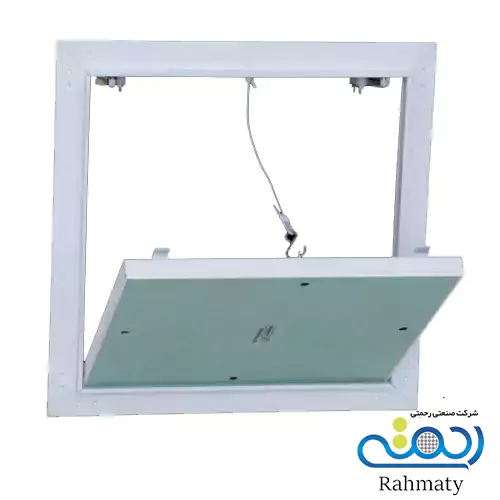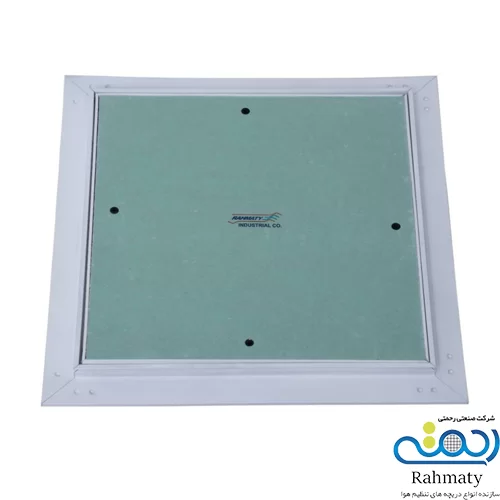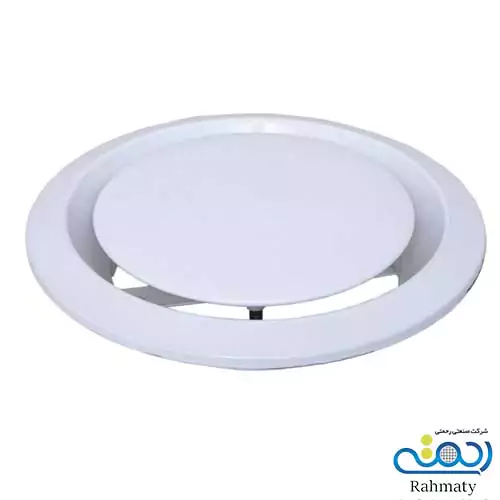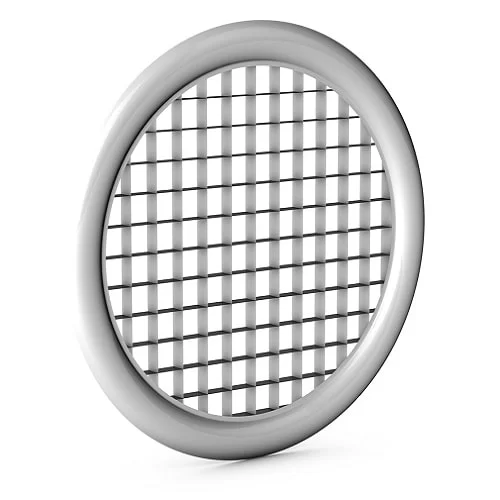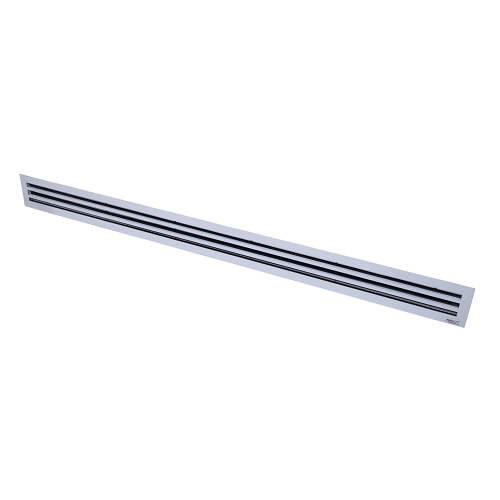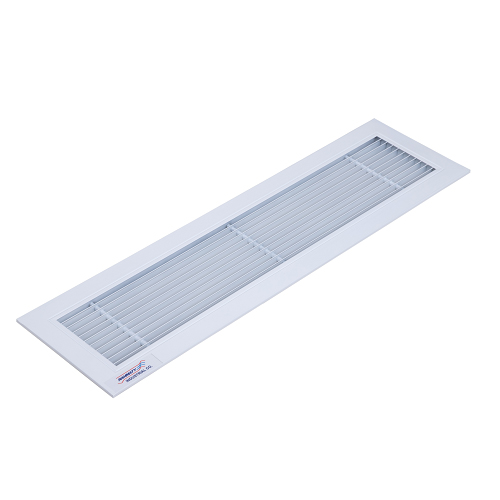
Export of Rahmaty air diffuser grills to neighboring countries
Rahmaty Industrial Company has established itself as a leading manufacturer in the field of industrial air diffuser grills. With a strong commitment to quality and innovation, the company has expanded its operations to international markets, particularly focusing on neighboring countries. These exports have not only strengthened the company’s reputation but have also showcased the exceptional craftsmanship and durability of Rahmaty’s products on a global scale.
Rahmaty’s air diffuser grills, designed to meet the highest industrial quality, are widely recognized for their reliability and efficiency in various sectors, including construction industry, installation and building projects. By leveraging advanced manufacturing technologies and a skilled workforce, the company has ensured its products remain competitive and highly sought after in international markets.
Exporting to neighboring countries such as Iraq, and Afghanistan, Rahmaty Industrial Company has successfully navigated the challenges of cross-border trade. Their seamless logistics network and dedication to customer satisfaction have enabled them to deliver high-quality air diffuser grills to clients across diverse industries. Moreover, the company’s focus on maintaining strong partnerships with distributors and contractors has played a key role in its regional success.
Rahmaty Industrial Company’s vision extends beyond business growth. By prioritizing quality improvement and precision in manufacturing and dimensional conformity, the company has positioned itself as a responsible and forward-thinking enterprise. Through its exports, Rahmaty not only contributes to regional economic development but also strengthens international ties, reflecting the company’s commitment to excellence and global collaboration.


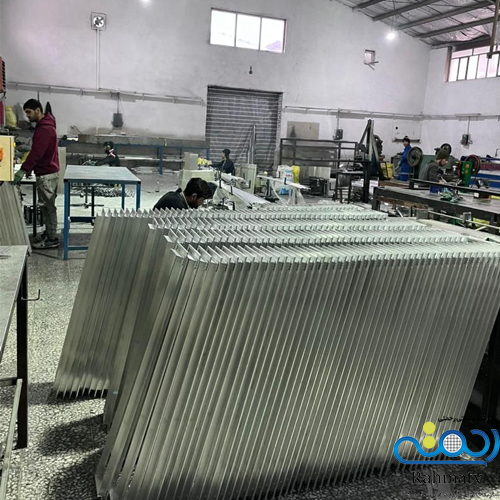

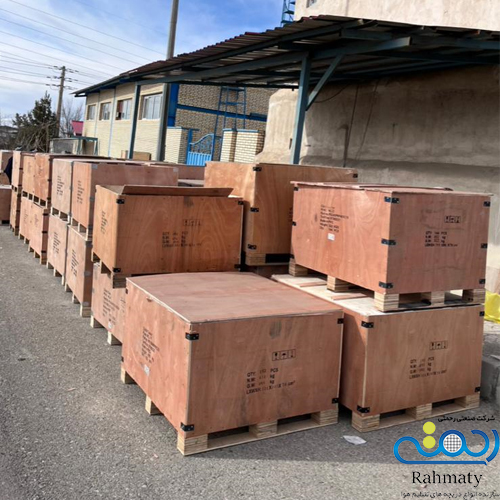
What we export
kenauf access door
Access panels, commonly referred to as “kenauf access panel” in Persian, are integral components in modern construction, particularly within drywall systems. These panels facilitate unobstructed access to concealed mechanical, electrical, and plumbing (MEP) installations, ensuring efficient maintenance and inspections. For civil and MEP engineers, understanding the technical specifications and applications of these access panels is crucial.
- Structural Composition and Material Specifications:
Access panels are typically fabricated from high-grade aluminum profiles, providing a lightweight yet robust frame. The door infill often comprises moisture-resistant gypsum boards (MR boards), enhancing durability in humid environments. The aluminum frame is usually finished with a polyester powder coating (e.g., RAL 9016), offering resistance against corrosion and ensuring longevity.
- Integration with Drywall Systems:
Designed for seamless integration, these panels align flush with drywall surfaces, maintaining the aesthetic continuity of walls and ceilings. The installation process involves securing the frame to the surrounding drywall structure, ensuring stability and minimizing any potential for movement or misalignment over time.
- Access Mechanism and Safety Features:
Equipped with concealed push-lock mechanisms, the access panels allow for effortless opening and closing without compromising the visual appeal. Additionally, a safety cable (often a steel wire rope) connects the door to the frame, preventing accidental detachment and ensuring user safety during inspections or maintenance activities.
- Applications in MEP Installations:
In mechanical systems, these panels provide access to components such as cleanouts, valve assemblies, and fan coil units, facilitating routine maintenance and emergency interventions. For electrical installations, they offer entry points to junction boxes, control panels, and cable pathways, ensuring compliance with safety standards and simplifying troubleshooting processes.
- Customization and Adaptability:
Rahmaty industrial company offer access panels in various dimensions to accommodate specific project requirements. The design allows for the application of different surface finishes, including paint, wallpaper, or tiles, enabling the panel to blend seamlessly with the surrounding decor. This adaptability ensures that functional requirements do not compromise architectural aesthetics.
In conclusion, access panels are indispensable in facilitating the maintenance and inspection of concealed MEP (mechanical, electrical, and plumbing) systems within drywall constructions. Their thoughtful design, combining functionality with aesthetic considerations, underscores their importance in contemporary building practices. For engineers and construction professionals, a comprehensive understanding of these components is essential to ensure optimal integration and performance in building projects.
Knauf access panels serve as a vital component across diverse building types, combining functionality with adaptability. Their technical precision, durability, and aesthetic integration make them indispensable for engineers and contractors in achieving optimal building performance. Below are the primary building types where these access panels are widely employed:
- Residential Buildings
Knauf access panels are extensively used in residential buildings, such as apartments, villas, and townhouses, to conceal utility installations without compromising aesthetics. These panels provide access to junction boxes, HVAC ducts, water supply valves, and drainage cleanouts. They are designed to integrate flush with false ceiling, ensuring minimal visual disruption within living spaces.
- Commercial Buildings
In commercial establishments like shopping malls, office complexes, and retail outlets, Knauf access panels are essential for managing extensive MEP (mechanical, electrical, and plumbing) systems. These panels facilitate easy access to critical components, such as control panels, cable trays, and fire suppression systems. Their fire-rated variants are particularly critical for ensuring compliance with safety codes in high-occupancy structures.
- Healthcare Facilities
Access panels are indispensable in hospitals, clinics, and laboratories where MEP (mechanical, electrical, and plumbing) systems must be easily accessible for routine maintenance or emergency interventions. They enable access to HVAC systems for maintaining clean air circulation and to plumbing systems for ensuring uninterrupted water supply. Moisture-resistant gypsum panels are ideal for use in sterile and humid environments.
- Industrial Facilities
Knauf access panels are critical in industrial facilities, such as factories and warehouses, where robust and durable solutions are required. These panels provide access to equipment like industrial-grade wiring systems, machinery control units, and ductwork for large-scale ventilation systems. Their corrosion-resistant aluminum frames ensure longevity in harsh operational environments.
- Hospitality Buildings
Hotels, resorts, and conference centers rely on access panels to maintain the functionality of their concealed MEP systems. These panels enable maintenance of lighting controls, fan coil units, and concealed piping systems, ensuring uninterrupted guest services. Customizable finishes allow these panels to blend seamlessly with the luxurious interiors of hospitality establishments.
- Educational Institutions
Schools, colleges, and universities benefit from Knauf access panels for maintaining electrical conduits, network wiring, and HVAC systems. These panels support the infrastructure needs of technologically advanced classrooms and laboratories, ensuring system reliability while preserving the building’s aesthetic appeal.
Round ceiling diffusers & grills
- Definition and Primary Function
Round air diffusers, which are often made of aluminum, are engineered devices used to regulate airflow within HVAC systems. These components ensure uniform air distribution, maintaining optimal temperature and pressure balance in residential, commercial, and industrial buildings. Their design allows for efficient performance in both supply and return air applications.
- Material Composition and Durability
High-performance round air diffusers are typically constructed from materials like aluminum, stainless steel, or advanced polymers. These materials are selected for their lightweight properties, corrosion resistance, and ability to endure high static pressures. The material choice significantly impacts thermal conductivity and noise attenuation characteristics.
- Aerodynamic Design Features
The aerodynamic design of round vent grilles incorporates precision-engineered blades or louvers to minimize air resistance. Computational fluid dynamics is often employed to optimize their efficiency in varying airflow velocities.
- Integration with HVAC Systems
Round air diffusers are designed to seamlessly integrate with ductwork systems, often utilizing flange-mount or recessed-mount installation options. Compatibility with variable air volume (VAV) systems and zoned HVAC systems is critical, enabling dynamic adjustments to airflow based on thermal loads and occupancy.
- Performance Metrics
Key performance indicators include airflow capacity (measured in CFM), throw distance, pressure drop, and noise levels (expressed in decibels). Engineers often utilize these metrics to select diffusers for specific project applications.
- Aesthetic and Architectural Considerations
In modern construction, round air diffusers are designed to complement architectural aesthetics without compromising functionality. Powder coating or electrostatic coating provide customizable color options, ensuring seamless integration with interior designs while offering long-lasting durability.
- Application-Specific Variants
Round diffusers are available in variants such as perforated faceplates, multi-cone designs, and swirl patterns for specialized applications. For high-ceiling installations, jet diffusers are preferred due to their extended throw distance and directional adjustability, ensuring effective air distribution.
- Maintenance and Longevity
Ease of maintenance is a critical design consideration, with removable cores facilitating cleaning and servicing. Proper maintenance enhances operational efficiency and extends the lifespan of the diffuser, reducing overall lifecycle costs for building owners.
- Jet Diffuser
The jet diffuser is a high-performance circular air outlet designed for long-distance air throw. It is ideal for large spaces such as auditoriums, airports, and industrial facilities where precise air distribution and directional control are required.
- Jet Nozzle (Flat-Edge Openable Ceiling Diffuser(
The jet nozzle, featuring a flat-edge openable design, is a round ceiling diffuser specifically engineered for targeted airflow. Its sleek, functional design allows for efficient installation and maintenance, making it suitable for both modern architectural spaces and high-ceiling applications.
- Sauna Round Diffuser
The sauna round diffuser is designed for high-humidity environments such as saunas and steam rooms. Built from moisture-resistant materials, it ensures optimal air distribution while preventing corrosion or damage caused by humid conditions.
- Flat Round Diffuser (Speaker Type)
The flat round diffuser, commonly referred to as the “speaker-type diffuser,” features a low-profile design ideal for spaces requiring minimal visual impact. It’s simple, functional structure ensures efficient air distribution without compromising aesthetics.
- Prominent Round Diffuser
The prominent round diffuser stands out due to its slightly elevated design, allowing for enhanced airflow dispersion. This type is suitable for areas requiring higher air circulation while maintaining an elegant appearance.
- Round Mesh Diffuser
The round mesh diffuser is designed for specific applications requiring air filtration and even airflow. Its perforated structure ensures a uniform air distribution pattern while providing a modern and functional look for residential or commercial spaces.
Each type of diffuser manufactured by Rahmaty Industrial Company is engineered with precision, utilizing high-quality materials such as aluminum and advanced electrostatic coating. These diffusers are tailored to meet the diverse requirements of HVAC systems in residential, commercial, and industrial settings. The company’s focus on innovative designs ensures a balance between functionality, durability, and aesthetics.
Linear slot diffusers & grills
- Aesthetic and Decorative Appeal:
Slot diffusers are widely recognized for their luxurious and modern appearance, making them an excellent choice for projects requiring a decorative touch. Their sleek design integrates seamlessly into high-end architectural and interior design plans, adding both functionality and aesthetic value.
- Uniform Airflow Distribution:
These diffusers are designed to ensure an even distribution of airflow across the outlet. The capability to adjust airflow uniformity helps optimize HVAC system efficiency, providing consistent air distribution and enhancing occupant comfort in residential and commercial spaces.
- Curved and Circular Configurations:
Slot diffusers can be custom-manufactured in curved or circular shapes to accommodate unique architectural designs. This flexibility allows engineers to align HVAC components with unconventional building layouts without compromising functionality or visual harmony.
- Enhanced Slot Customization:
With the capability to incorporate up to ten air outlet slots and produce continuous units up to 4 meters in length, slot diffusers offer unmatched versatility. This makes them ideal for large-scale projects, enabling engineers to cover extended areas efficiently without additional connection points.
- Effortless and Clean Installation:
The installation process for slot diffusers is remarkably simple and clean, requiring no visible screws or fasteners on the surface. This design minimizes disruption to interior aesthetics while reducing labor time and costs, making them a preferred choice for streamlined project execution.
- Angular Corner Adaptability:
Slot diffusers are adaptable for corners with customizable angles, ensuring a precise fit in non-linear or irregular layouts. This feature enhances their suitability for complex designs in modern architectural projects, providing functional airflow solutions in challenging spaces.
- End Closure Configurations:
These diffusers can be fabricated with closed ends on one side, both sides, or left open on both ends. This customization allows engineers to specify configurations that align perfectly with airflow requirements and design constraints, further enhancing their operational efficiency.
Slot diffusers, due to their advanced design, customization capabilities, and high performance, are utilized in a wide range of buildings and architectural projects. These diffusers are particularly suitable for spaces that require an optimal combination of functionality and modern design.
- Luxury Office and Commercial Buildings:
In office and commercial projects where interior design is of paramount importance, slot diffusers are ideal due to their minimalistic appearance and seamless integration with suspended ceilings. They ensure uniform airflow distribution in large spaces such as open offices and spacious lobbies.
- Hotels and Hospitality Centers:
In hotels, where thermal comfort and visual aesthetics are essential, slot diffusers are preferred for their concealed installation and ability to provide pleasant air distribution in both public and private areas.
- Modern Residential Buildings:
In high-end residential projects, these diffusers are used in living rooms and bedrooms due to their customization options, including adjustable lengths, multiple slots, and the ability to produce curved or circular shapes.
- Shopping Malls and Large Public Spaces:
In shopping malls and airport halls, slot diffusers are ideal for distributing air efficiently in large areas, thanks to their extended length capability of up to 4 meters and quick, clean installation.
Linear air grilles
- High-Quality Construction Material
Rahmaty linear air grilles are manufactured from high-grade extruded aluminum profiles, offering exceptional durability, corrosion resistance, and lightweight properties. The aluminum undergoes an anodizing process to enhance its resistance to environmental conditions and wear, ensuring long-lasting performance in both residential and commercial HVAC applications.
- Aerodynamic Blade Design
The grilles feature precisely engineered blades designed to provide optimal air distribution with minimal resistance. The fixed or adjustable blade options allow for precise control of air throw direction and velocity, making them ideal for both supply and return air systems. Blade spacing options (e.g., 12.5 mm or 20 mm) ensure compatibility with varied airflow requirements.
- Customizable Dimensions and Finishes
Rahmaty air grilles can be custom-manufactured to meet specific project requirements, including dimensions, blade orientation, and color finish. Powder coating is available in a wide range of RAL colors, ensuring seamless integration with interior designs while maintaining high resistance to chipping and fading.
- Versatile Mounting Options
The grilles are designed for flexibility in installation, compatible with both wall and ceiling mounting. Surface-mounted, flush-mounted, and concealed mounting configurations are available to suit various architectural and functional needs. A robust mounting frame ensures secure installation and prevents air leakage.
- Thermal and Acoustic Efficiency
The design minimizes turbulence and noise, ensuring quiet operation even in high-pressure systems. When integrated with thermal insulation materials, the grille enhances energy efficiency by reducing thermal losses and maintaining stable indoor temperatures.
- Integration with Modern HVAC Systems
Rahmaty linear air grilles are designed for seamless compatibility with advanced HVAC systems, including VAV (Variable Air Volume) systems and ductwork. They support balanced airflow distribution.
- Advanced Airflow Control
Optional accessories, such as opposed blade dampers and plenum boxes, are available for precise airflow regulation. These additions allow engineers to adjust air velocity and pressure drop without compromising overall system efficiency.
Rahmaty linear air grilles combine precision engineering, superior material quality, and innovative design, making them a trusted choice for HVAC professionals. They deliver high performance, aesthetics, and durability across a wide range of building applications.
Linear air diffusers play a pivotal role in HVAC systems, ensuring efficient airflow management and superior thermal comfort. Their versatility and functional design make them indispensable for a variety of building types. Below is a detailed account of their applications in specific environments:
- Commercial Office Buildings
Linear air diffusers are extensively used in modern office buildings to maintain uniform temperature distribution across open-plan layouts. Their slim profile integrates seamlessly into suspended ceilings, providing both aesthetic appeal and effective air delivery. By minimizing turbulence and noise, they ensure a comfortable working environment for occupants.
- Residential Complexes and High-Rise Buildings
In residential settings, linear diffusers are ideal for concealed duct systems, delivering quiet and efficient airflow. They are particularly effective in high-rise apartments, where compact and unobtrusive designs are necessary. By optimizing airflow in living rooms, bedrooms, and kitchens, they contribute to enhanced indoor air quality (IAQ) and occupant comfort.
- Healthcare Facilities and Laboratories
Hospitals, clinics, and laboratories demand precise air distribution to maintain sterile environments. Linear air diffusers are often installed in operating rooms, isolation wards, and cleanrooms due to their ability to deliver laminar airflow. Their high-efficiency performance reduces airborne contaminants, ensuring compliance with strict hygiene standards.
- Educational Institutions
In schools, universities, and libraries, linear diffusers provide efficient ventilation with minimal acoustic interference. Their noise-reducing capabilities make them suitable for lecture halls, classrooms, and study areas, where maintaining focus and comfort is essential.
- Retail Spaces and Shopping Malls
Retail environments require consistent airflow across expansive areas to maintain thermal comfort for shoppers. Linear diffusers are used in showrooms, boutique stores, and shopping malls for their ability to handle large airflow volumes while blending with modern interior designs.
- Industrial Facilities
In warehouses, factories, and workshops, linear diffusers distribute conditioned air effectively across high-ceiling spaces. Their durability and ability to withstand varying environmental conditions make them an ideal choice for industrial applications.
- Hospitality and Entertainment Venues
Hotels, restaurants, and theaters prioritize both functionality and aesthetics in HVAC design. Linear air diffusers are commonly installed in lobbies, guest rooms, and auditoriums for their sleek appearance and capability to maintain optimal thermal comfort.
In conclusion, the adaptability and advanced performance of linear air diffusers make them indispensable across diverse building types. Their ability to balance functionality, aesthetics, and energy efficiency underscores their importance in modern HVAC design.
 شرکت صنعتی رحمتی | تولید کننده دریچه هوا
شرکت صنعتی رحمتی | تولید کننده دریچه هوا
